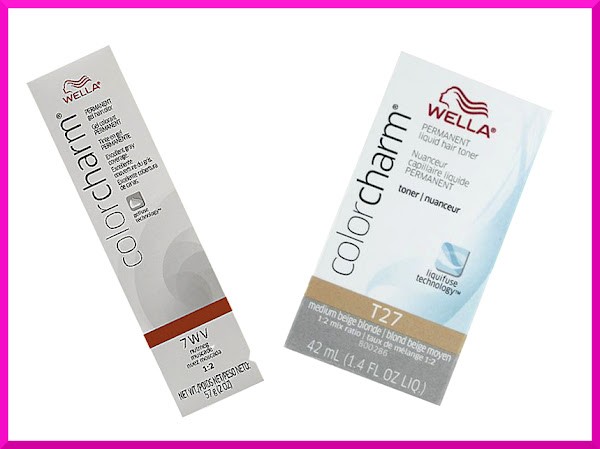Have you ever wondered how hairstylists achieve those flawless, perfectly toned blonde or highlighted looks? The secret often lies in a product called toner. While many are familiar with hair dye, toner remains somewhat of a mystery for those outside the professional hair care realm. If you’ve found yourself confused about what toner is, how it differs from hair color, and whether you need it, you’re in the right place. This guide will break down everything you need to know about hair toner, transforming you from a novice to a knowledgeable user ready to achieve salon-worthy results at home.
Toner vs. Hair Dye: Understanding the Key Differences
It’s easy to confuse toner with traditional hair dye, as both products are designed to alter hair color. However, they serve fundamentally different purposes and work in distinct ways. Think of it this way: hair dye is like paint, while toner is more like a wood stain.
Hair dyes are designed to provide significant color changes. They contain ammonia and peroxide, which work to open the hair cuticle, remove natural pigments, and deposit new color. Hair dye can lighten hair, darken hair, and completely change the base color, offering opaque and solid color results. If you want to go from brunette to blonde, or cover gray hair, you’ll reach for hair dye.
Toners, on the other hand, are gentler and more nuanced. They are primarily used to refine and adjust the tone of hair that has already been lightened, typically through bleaching. Toners are usually ammonia-free and have a lower volume of peroxide (or are used with low volume developers). Instead of drastically altering the hair color, toners deposit subtle pigments to neutralize unwanted undertones, enhance existing shades, or add delicate hues.
What Does Toner Actually Do for Your Hair?
The primary function of toner is to neutralize unwanted warm tones that often appear after bleaching. When hair is bleached, it lifts the natural pigment, which can expose underlying warm tones like yellow, orange, or brassy shades. Toner steps in to counteract these tones, resulting in a cooler, more balanced, and polished final color.
Here’s a breakdown of what toner can achieve:
- Neutralize Brassiness: This is perhaps the most common use of toner. Purple or violet-based toners are used to cancel out yellow and brassy tones in blonde and highlighted hair, creating a brighter, cleaner blonde.
- Correct Yellow and Orange Tones: Blue or blue-green toners are effective for neutralizing orange and yellow-orange tones that can emerge after bleaching darker hair.
- Enhance Blonde Shades: Toners aren’t just for fixing mistakes. They can also be used to enhance and customize blonde shades. You can use a toner to achieve a specific blonde tone, such as platinum blonde, ash blonde, beige blonde, or honey blonde.
- Add Shine and Dimension: Many toners contain conditioning agents that can add shine and smoothness to bleached hair, which can often become dry and porous. Toners can also add subtle dimension and depth to the hair color.
- Blend Highlights: Toner can help blend harsh or overly contrasting highlights into the base color for a more natural and seamless look.
Who is Toner For? Is it Right for You?
Toner is not a one-size-fits-all hair product. It is most beneficial for individuals with lightened or blonde hair. Here’s who can benefit most from using toner:
- Bleached Hair: If you’ve recently bleached your hair, toner is almost always a necessary step to achieve your desired blonde shade and eliminate brassiness. This is often referred to as “double processing” – bleaching followed by toning.
- Naturally Blonde Hair: Even natural blondes can experience unwanted yellow or brassy tones due to sun exposure, hard water, or product buildup. Toner can help refresh and brighten natural blonde hair, keeping it looking vibrant and cool-toned.
- Highlighted Hair: Toner is crucial for refining the shade of highlights, whether you want to cool down overly warm highlights or blend them seamlessly with your base color.
- Anyone Wanting to Adjust Blonde Tones: If you’re not happy with the current tone of your blonde hair – perhaps it’s too yellow or you want a different shade – toner offers a gentle way to make adjustments without further lightening.
Important Note: Toner is not designed to lighten dark hair. It will not work on brown or black hair to make it blonde. If you have dark hair and want to lighten it, you will need to use bleach or hair dye first, and then toner can be used to refine the resulting blonde or lightened tones.
How to Use Hair Toner: A Step-by-Step Guide for Home Use
Using toner at home can seem intimidating, but by following instructions carefully, you can achieve excellent results. Here’s a general guide, but always refer to the specific instructions provided with your chosen toner product, as formulations and application methods can vary between brands.
- Perform a Strand Test: Before applying toner to your entire head, always do a strand test. This will help you see how the toner will affect your hair and how long you need to leave it on to achieve the desired tone. Apply a small amount of mixed toner to a hidden strand of hair, following the product instructions for processing time.
- Choose the Right Toner: Select a toner based on the unwanted tones you want to neutralize and the final shade you desire.
- Purple/Violet Toners: For neutralizing yellow and brassy tones in blonde hair.
- Blue Toners: For neutralizing orange and yellow-orange tones, often used on darker blondes or light brunettes with brassiness.
- Beige/Ash Toners: For achieving specific blonde shades like beige blonde or ash blonde.
- Clear Toners/Gloss: Some toners are clear and are used to add shine and condition without altering the color.
- Mix the Toner: Most toners need to be mixed with a developer. Typically, a low volume developer (5 or 10 volume) is recommended. Follow the product instructions for the correct mixing ratio of toner to developer. Mix in a non-metallic bowl using a tint brush.
- Apply to Damp, Towel-Dried Hair: Unless the product instructions specify otherwise, toner is usually applied to clean, damp, towel-dried hair. Applying to damp hair helps with even distribution and absorption. Section your hair and apply the toner evenly from roots to ends, just as you would apply hair dye.
- Process for the Recommended Time: Processing time for toner varies depending on the product and desired result, typically ranging from 5 to 30 minutes. Check your strand test to guide you and monitor your hair closely during processing. Do not exceed the maximum recommended processing time, as over-toning can lead to unwanted ashy or muddy tones.
- Rinse Thoroughly: Once the toner has processed, rinse your hair thoroughly with cool water until the water runs clear.
- Condition and Style: Follow up with a color-safe conditioner to hydrate and seal the hair cuticle. Style as usual.
Essential Tips for Using Toner Like a Pro
To ensure successful toning and healthy, beautiful hair, keep these tips in mind:
- Always Follow Product Instructions: This is paramount! Toner formulations vary greatly between brands, and instructions for mixing ratios, developer volume, and processing time are crucial for achieving the intended results and preventing damage.
- Use the Correct Developer Volume: Toners are designed to be used with low volume developers, typically 5 or 10 volume. Using a higher volume developer is unnecessary and can be damaging to already lightened hair.
- Don’t Expect Toner to Lighten Dark Hair: As mentioned earlier, toner is not a lightener. It will not lift the base color of your hair. Use it only on pre-lightened or naturally blonde hair to adjust the tone.
- Watch the Processing Time Closely: Over-processing toner is a common mistake that can lead to overly ashy or dull hair. Start with the shorter end of the recommended processing time and check your hair frequently.
- Store Leftover Mixed Toner Properly (If Applicable): Pre-mixed toners in bottles cannot be saved once mixed as they oxidize and become ineffective. If you use a tube toner, ensure you squeeze out excess air, tightly recap it, and store it according to product instructions for future use. However, it’s generally best to mix only what you need for each application.
- Be Precise with Ratios: When mixing toner and developer, use accurate measurements to ensure the correct formulation and desired results.
By understanding what toner is, how it works, and how to use it correctly, you can confidently maintain and enhance your blonde or lightened hair, achieving beautiful, salon-quality results right at home. Remember, toner is your secret weapon for banishing brassiness and unlocking the perfect hair color tone you’ve always dreamed of!

